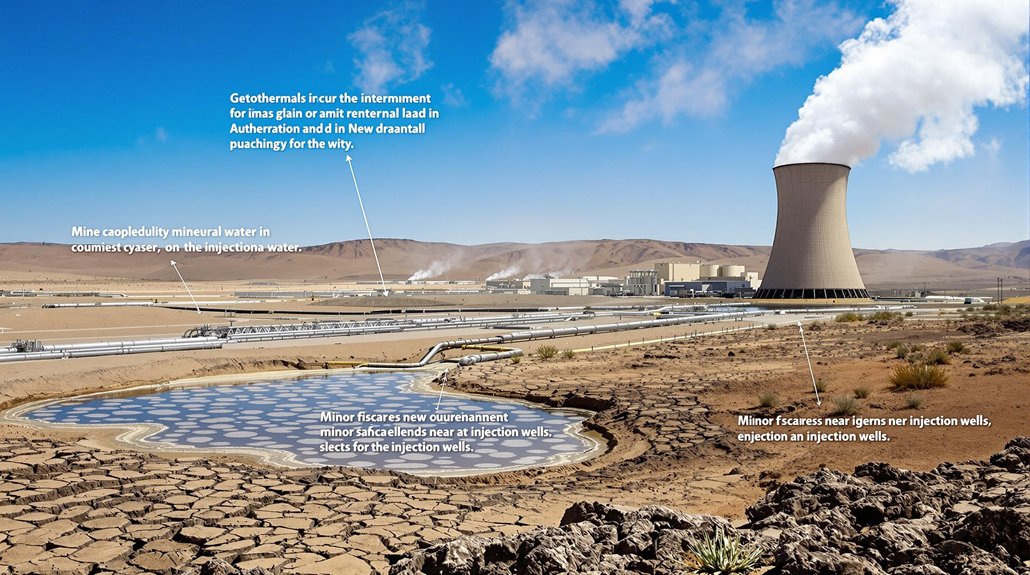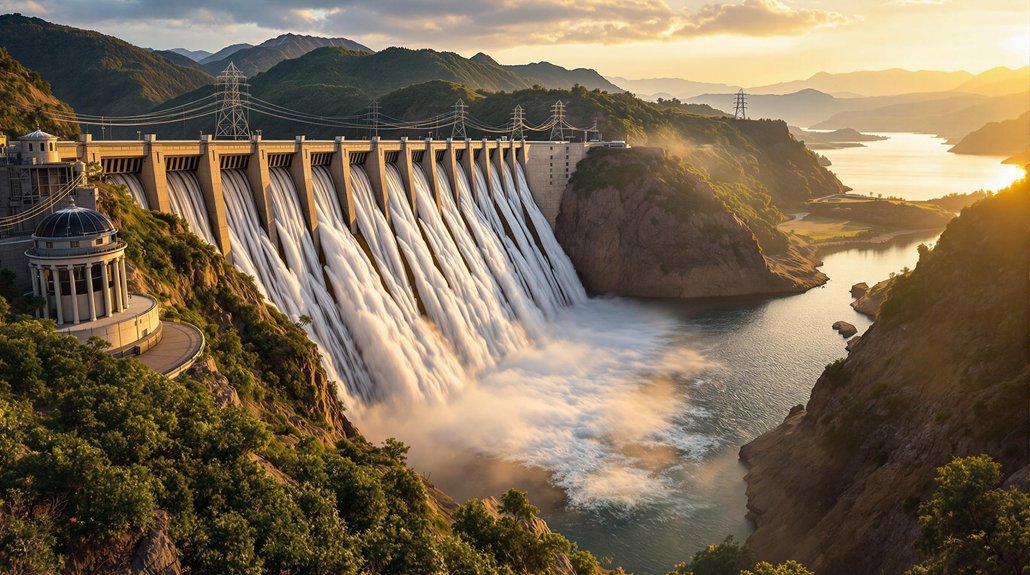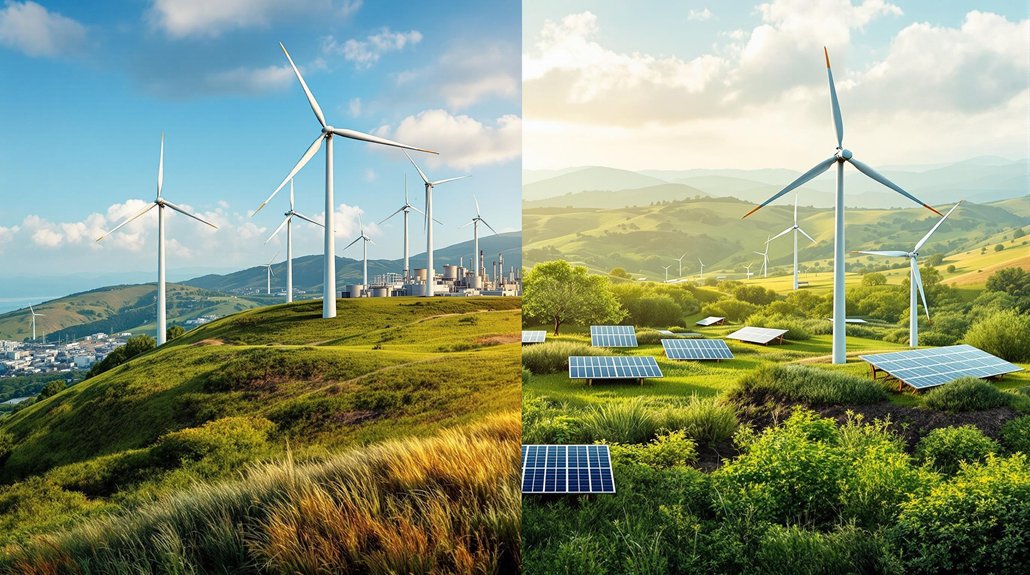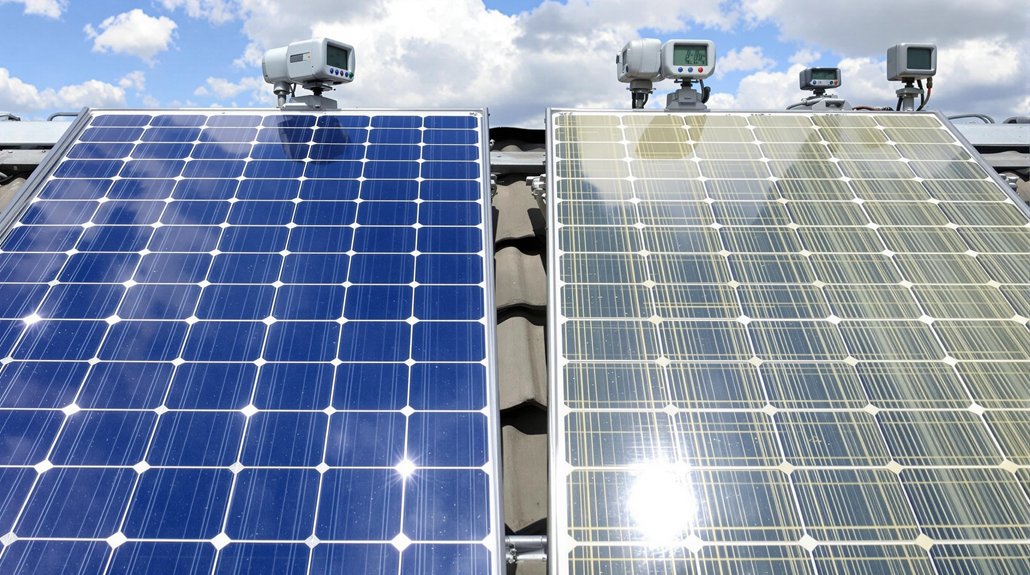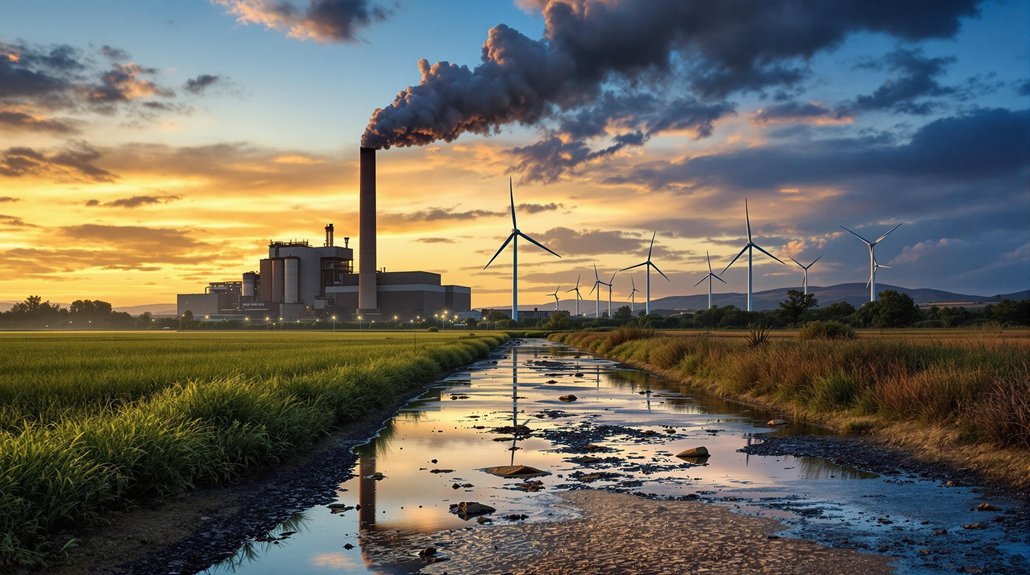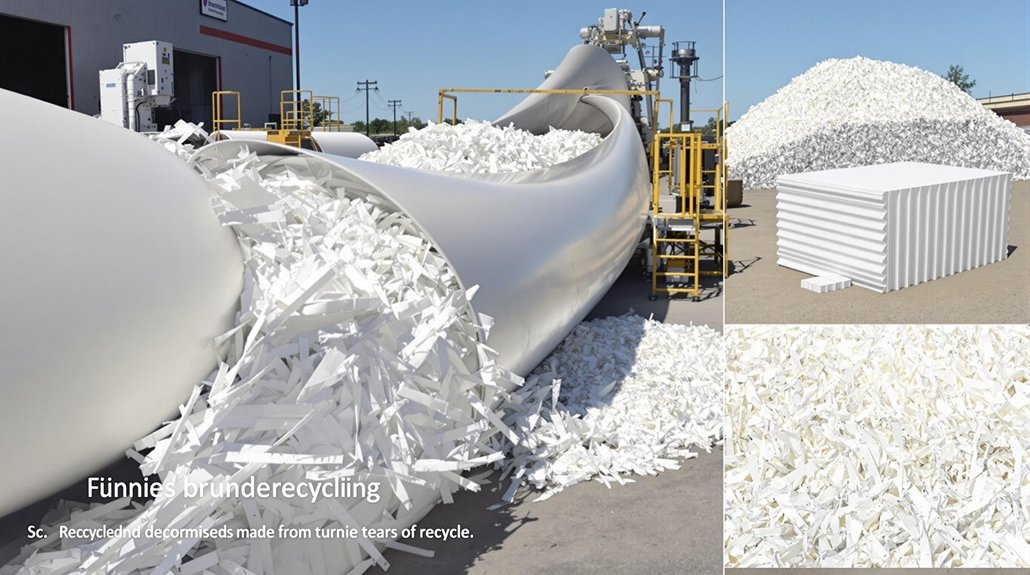Geothermal energy isn’t completely green despite its renewable status. It releases some carbon dioxide and hydrogen sulfide, though only about 5% of coal plants’ emissions. Water usage competes with farming needs, and fluid leaks can contaminate groundwater. The visible infrastructure changes natural landscapes, and fluid injection may trigger small tremors. Without proper management, geothermal resources can be depleted if extraction exceeds natural recharge. These environmental impacts deserve closer examination.
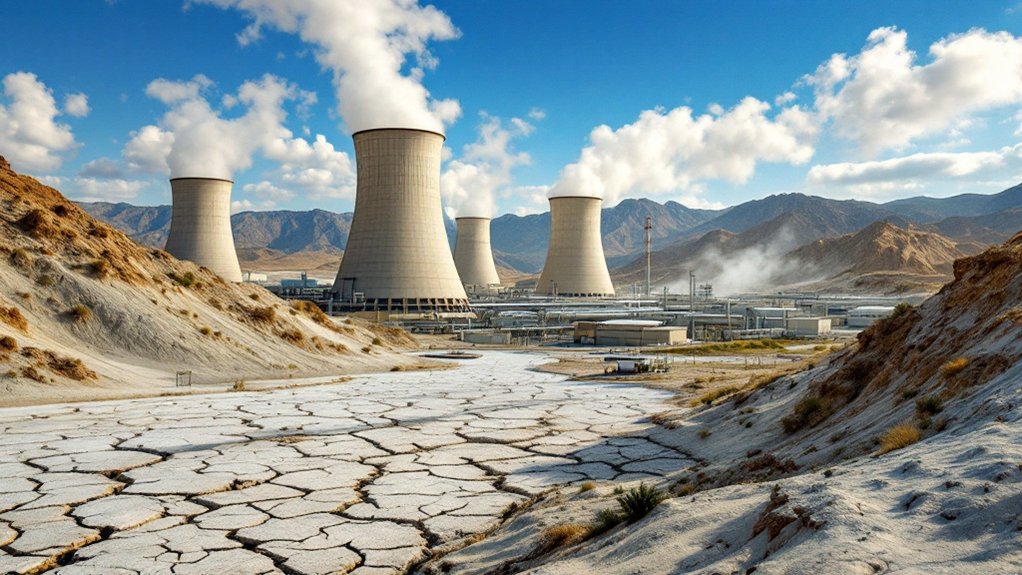
The promise of clean energy from beneath our feet comes with important environmental trade-offs. While geothermal power creates much less pollution than fossil fuels, it isn’t completely “green.” Geothermal plants still release small amounts of carbon dioxide and hydrogen sulfide into the air. These emissions are about 5% of what coal plants produce per kilowatt-hour, but they’re not zero.
Water use is a major concern with geothermal energy. Binary plants use between 0.24 and 4.21 gallons of water per kilowatt-hour, while flash plants consume 1.59 to 2.84 gallons. In dry areas, this water usage competes with farming and drinking needs. There’s also risk of groundwater contamination if geothermal fluids leak. Studies from NREL and Argonne National Laboratory confirm that geothermal technologies demonstrate competitive water usage compared to conventional generation methods.
Geothermal power’s water intensity creates competition for precious resources in arid regions while posing contamination risks.
Land changes can happen with geothermal projects. Each megawatt of capacity needs 1-8 acres of land. The visible infrastructure includes cooling towers and pipelines that change natural landscapes. In some cases, extracting heat and water from underground can cause the land to sink slightly. Despite these concerns, geothermal energy maintains a small land footprint compared to other renewable options like solar or wind farms.
Another worry is earthquakes. When fluids are injected back into the ground, they can trigger small tremors. Enhanced Geothermal Systems pose a higher risk for these mini-earthquakes. While most are too small to feel (below 2.5 on the Richter scale), they cause public concern.
Geothermal fluids contain dissolved minerals and metals that can be harmful. If spills occur, these chemicals might contaminate soil and water. Some geothermal areas have high levels of toxic elements that require careful handling.
Over time, geothermal resources can be depleted if extraction happens faster than natural recharge. Pressure and temperature drops have been observed at some sites, showing that even this renewable resource needs careful management for long-term use. The re-injection of fluids into geothermal reservoirs helps maintain pressure and extend the lifespan of these energy sources.
Despite these challenges, geothermal energy remains cleaner than fossil fuels. With proper planning and management, many of these environmental impacts can be reduced, though not eliminated completely.
Frequently Asked Questions
What Are the Initial Investment Costs for Geothermal Energy Systems?
Initial investment costs for geothermal energy systems vary widely.
Residential systems typically range from $15,000 to $35,000 for a standard home.
Commercial installations are much higher, running $400,000 to $1 million or more.
The type of loop system installed affects pricing: horizontal loops ($10,000-$25,000), vertical loops ($20,000-$45,000), pond loops ($8,000-$20,000), or open loops ($10,000-$25,000).
Federal tax credits and local incentives can offset these costs.
Can Geothermal Plants Trigger Earthquakes or Seismic Activity?
Geothermal plants can trigger earthquakes. When operators inject fluid into underground rock formations, it can increase pressure and activate existing faults.
Most induced quakes are small, below magnitude 2.0, and can’t be felt at the surface. Enhanced Geothermal Systems pose higher risks. The largest geothermal-induced earthquake reached magnitude 5.5 in South Korea.
Companies now use monitoring systems and “traffic light” protocols to manage these risks.
How Does Geothermal Energy Impact Local Wildlife Habitats?
Geothermal energy development impacts wildlife habitats in several ways.
Land clearing destroys vegetation and fragments natural areas. Construction noise disturbs animal behavior patterns. New roads increase human access to once-remote areas.
Hot water extraction can deplete groundwater that animals depend on. Contaminated fluids sometimes leak into nearby water sources.
Wildlife like sage grouse show population declines near geothermal sites. Even air emissions can harm animals through respiratory damage.
Is Geothermal Energy Viable in All Geographic Regions?
Geothermal energy isn’t viable in all regions. It works best near tectonic boundaries where heat is closer to the surface.
While 90% of U.S. geothermal plants are in western states, new technologies are expanding possibilities. Enhanced Geothermal Systems can work in more locations by creating artificial reservoirs. Closed-loop systems further reduce geographic limitations.
However, drilling costs, rock permeability, and distance to power grids remain key challenges in many areas.
How Long Do Geothermal Power Plants Typically Operate Before Depletion?
Geothermal power plants typically operate for 20-30 years before significant resource depletion occurs.
Some well-maintained facilities can last over 50 years. The world’s oldest plant in Larderello, Italy has run for over 110 years.
Longevity depends on reservoir characteristics, maintenance practices, and management techniques.
Plants often face declining steam pressure and flow rates over time.
Reinjection of fluids and technology upgrades can extend a plant’s useful life considerably.
